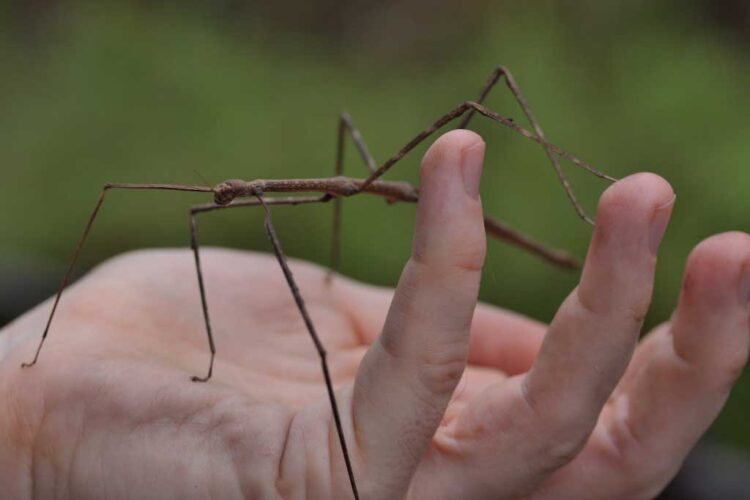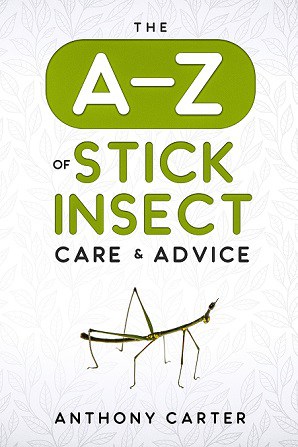Table of Contents
In the vast world of insects, few are as intriguing as stick insects . These fascinating creatures, known for their uncanny resemblance to twigs and branches, spark a myriad of questions, one of the most common being, “Do stick insects bite?” This comprehensive article aims to answer this question while taking a deep dive into their physiology, feeding habits, behaviors, and interactions with humans.
. These fascinating creatures, known for their uncanny resemblance to twigs and branches, spark a myriad of questions, one of the most common being, “Do stick insects bite?” This comprehensive article aims to answer this question while taking a deep dive into their physiology, feeding habits, behaviors, and interactions with humans.
Understanding Stick Insect Physiology
Stick insects, also known as phasmids are invertebrates that boast a range of unique physical characteristics. These traits contribute not only to their survival in the wild but also play a significant role in the interaction between these insects and their environment, including potential encounters with humans.
that boast a range of unique physical characteristics. These traits contribute not only to their survival in the wild but also play a significant role in the interaction between these insects and their environment, including potential encounters with humans.
For a wealth of advice and information on all things stick insects, check out my ebook by clicking here or on either of the images (all open in a new tab). All your stick insect questions covered for just $2.99 (or the equivalent in your currency)!
or on either of the images (all open in a new tab). All your stick insect questions covered for just $2.99 (or the equivalent in your currency)!
Stick Insect Physical Characteristics
Stick insects are long, slender creatures, with bodies that closely resemble sticks or twigs – hence their name. They range in size from a mere half inch to almost two foot in length, depending on the species. Their bodies are typically brown, green, or gray, further enhancing their camouflage abilities.
Key to our exploration of whether stick insects bite, however, is their mouthparts. Stick insects have what entomologists call “chewing” mouthparts, much like grasshoppers and ants. These mouthparts are specifically designed for slicing and grinding up plant matter.
Stick Insect Mouthparts and Their Functions
The mouthparts of a stick insect include a labrum (upper lip), mandibles (jaws), maxillae (additional jaws), and a labium (lower lip). While these may sound intimidating, it’s important to understand that these are adapted for a herbivorous lifestyle, evolved to delicately manipulate, cut, and grind leaves.
Diversity of Stick Insects Species
There exists a staggering diversity among stick insects , a factor that subtly contributes to their behaviors, including their interaction with humans.
, a factor that subtly contributes to their behaviors, including their interaction with humans.
Scale of Diversity
There are over 3,000 known species of stick insects , spread across every continent except Antarctica. This remarkable variation in species showcases the adaptability and resilience of these fascinating creatures, with species sizes ranging from a tiny half inch to a gigantic two feet in length. Their variety doesn’t end with size; these insects also exhibit a broad range of colors and shapes, allowing them to blend seamlessly into their specific habitats.
, spread across every continent except Antarctica. This remarkable variation in species showcases the adaptability and resilience of these fascinating creatures, with species sizes ranging from a tiny half inch to a gigantic two feet in length. Their variety doesn’t end with size; these insects also exhibit a broad range of colors and shapes, allowing them to blend seamlessly into their specific habitats.
Impact of Diversity on Behavior
The diversity of stick insects isn’t just cosmetic. It also influences their behaviors, including their defensive mechanisms. Some species, for instance, have evolved to drop and regenerate their limbs to escape predators – a phenomenon known as autotomy. Yet others might change their color slightly depending on their diet and surroundings, a mechanism to enhance their camouflage. However, irrespective of their species and the unique survival strategies they employ, biting is generally not a characteristic behavior among these insects.
Unique Species Characteristics and Biting
With such a broad variety of species, there are naturally slight variations in the way these insects might respond to perceived threats. A few species, like the Eurycantha calcarata or New Guinea spiny stick insect, are known to use their spines as a deterrent. Others like the Anisomorpha or two-striped stick insect can emit a defensive spray when threatened. However, even in these cases, biting is rarely reported. The consistent lack of aggressive or defensive biting across this diverse group of insects is further evidence that stick insects are typically harmless to humans.
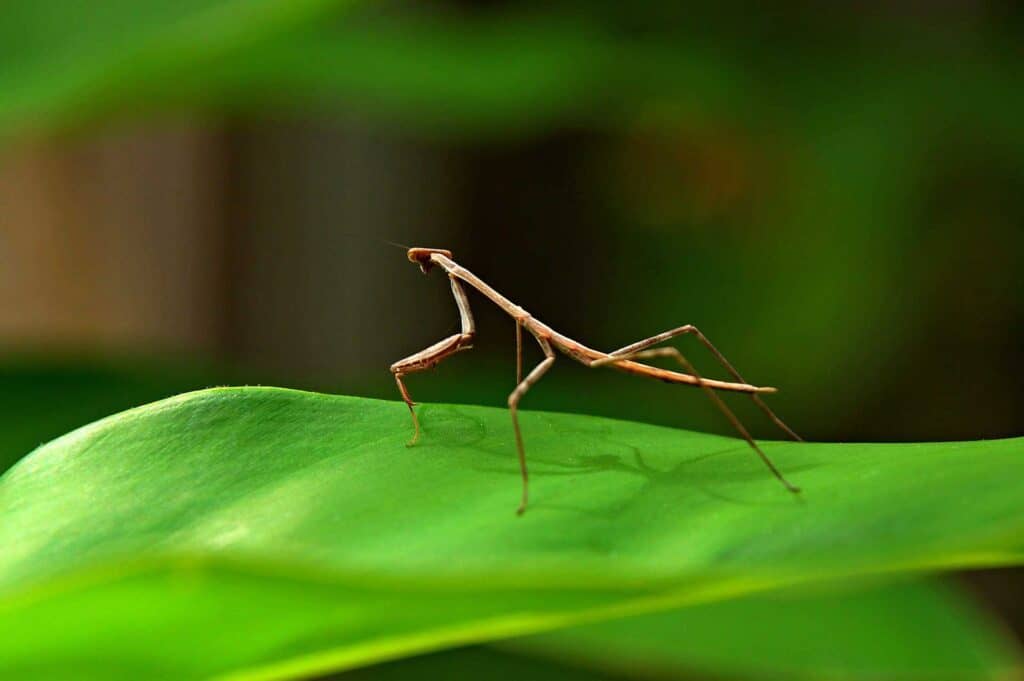
Feeding Habits of Stick Insects
Understanding the feeding habits of stick insects is crucial when considering if they pose any threat to humans.
Predominantly Vegetarian Diet
Stick insects are primarily herbivores, with a diet consisting largely of leaves from a variety of trees and shrubs. They are not predators, and therefore do not possess the kind of mouthparts designed to capture, kill, or consume other animals, including humans.
Stick Insects’ Favorite Plants and Trees
Stick insects have a preference for certain types of plants. Species such as the Indian stick insect favor privet and ivy, while others, like the giant prickly stick insect, enjoy eating eucalyptus and bramble. Understanding their food preferences can help illustrate why biting is not a typical behavior in these insects.
Do Stick Insects Bite as Part of Their Feeding Habits?
Due to their plant-based diet and the nature of their mouthparts, stick insects are not equipped or inclined to bite humans for feeding purposes. Their jaws are designed for masticating foliage, not for defensive bites.
Stick Insect Behavior
Beyond their feeding habits, the general behavior of stick insects also offers insights into their potential for biting.
Stick Insect Defensive Mechanisms
Stick insects rely heavily on camouflage for protection against predators. However, when threatened, some species might use other defensive mechanisms such as playing dead, swaying to mimic a moving branch, or even secreting a foul-smelling substance. However, biting is not a common or natural defensive mechanism for these creatures.
Incidents of Stick Insects Biting
While rare, there have been isolated reports of stick insects biting humans. However, these incidents are typically associated with mishandling, causing stress to the insect. Despite these occasional reports, it’s crucial to remember that stick insects are generally passive creatures and do not naturally exhibit aggressive behavior towards humans.
Comparing Stick Insect Behavior to Other Biting Insects
When comparing stick insects to other insects known to bite humans, such as mosquitoes or certain types of spiders and ants, there is a significant difference in behavior and physiology. These insects and arachnids are either predators or possess defensive biting mechanisms. Stick insects, on the other hand, do not typically exhibit such behavior due to their herbivorous lifestyle and peaceful nature.
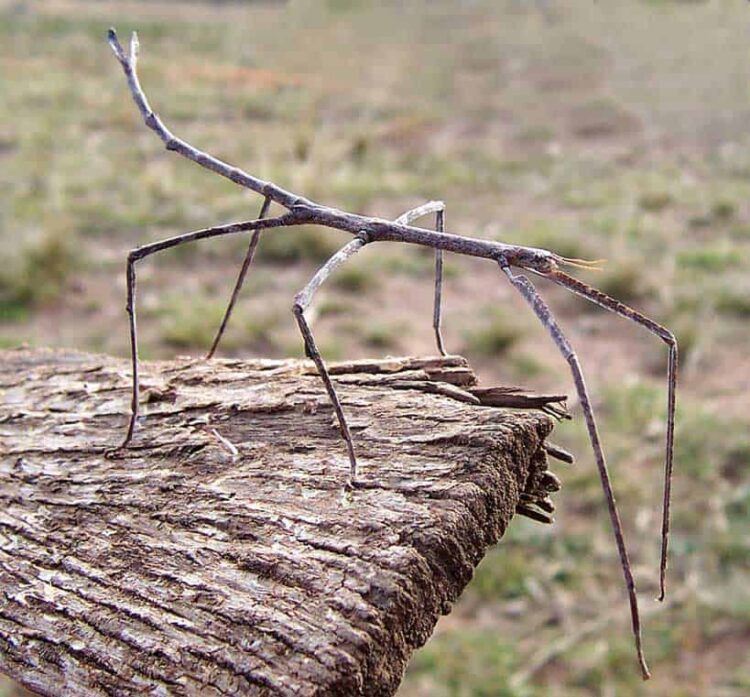
The Impact of Environment on Stick Insect Behavior
Environment plays a significant role in shaping the behavior of many creatures, and stick insects are no exception. The type of habitat they reside in and the climatic conditions they experience can greatly influence their behaviors, including their propensity to bite.
Influence of Habitat on Stick Insect Behavior
Stick insects are found across the globe, residing in a wide range of habitats, from tropical rainforests to subtropical and temperate regions. The type of habitat influences their feeding and defensive behavior. In habitats with a variety of vegetation, stick insects have a broad choice of plants to feed on, thereby reducing their stress levels and potential defensive reactions. On the contrary, in areas with limited vegetation, stick insects may become more stressed, leading to more defensive behavior, though biting remains a rarity.
Impact of Climatic Conditions
The climatic conditions in their habitat also impact stick insect behavior. They prefer warmer climates and tend to be more active during warm periods. Cold, harsh conditions can lead to a state of dormancy, a survival mechanism stick insects employ to withstand unfavorable conditions. In these states, their interaction with the environment and potential threats, including humans, is significantly reduced.
Effect of Human Disturbance
Stick insects usually inhabit areas with minimal human interference. When their habitats are disrupted due to human activities such as deforestation or urbanization, it can lead to an increase in stress levels, potentially causing changes in their behavior. However, even in these circumstances, stick insects are more likely to rely on their excellent camouflage or other defensive strategies than resort to biting.
Stick Insects and Human Interaction
As we move further towards answering the question, “Do stick insects bite?”, we need to examine their interactions with humans and the risks, if any, they pose.
Do Stick Insects Pose Risks to Humans?
Based on their biology and behavior, stick insects do not pose a significant risk to humans. Their primary defense is their superb ability to blend into their surroundings rather than resorting to aggressive or defensive behavior. However, like any wild creature, they might attempt to bite if they feel extremely threatened, but this is a rarity.
Handling Stick Insects Safely
While it’s unlikely that stick insects will bite, it’s important to handle them with care to avoid causing them stress or harm. They should be gently picked up and held in an open palm, allowing them to walk freely. Avoid squeezing or gripping them tightly, as this can frighten them or, worse, cause injury due to their delicate bodies.
Potential Allergic Reactions and Management
In very rare cases, individuals may experience an allergic reaction when in contact with stick insects, though this is typically due to the insects’ defensive secretions rather than a bite. If you know or suspect you may have an allergy to stick insects, it’s best to avoid direct contact. In the event of an allergic reaction, medical attention should be sought immediately.
First Aid Measures in Case of a Stick Insect Bite
In the rare case that a stick insect does bite, it’s important to know how to respond. The bite of a stick insect is unlikely to cause severe harm, but knowing basic first aid measures can alleviate discomfort and prevent possible complications.
The first step is to remain calm. A stick insect bite can be surprising, but it’s crucial to remember that these insects are not venomous. Their bites, while potentially uncomfortable, are not dangerous.
Next, gently remove the stick insect without causing harm to it or potentially inciting another bite. Given their delicate nature, it’s best to allow the insect to move away on its own, if possible. If not, gentle coaxing can encourage it to release its grip.
After ensuring the stick insect has been safely removed, cleanse the bitten area with warm soapy water. This will help prevent any potential infection. Once clean, applying a cold pack can help minimize swelling and discomfort.
Over-the-counter pain relievers and anti-inflammatory medication can be used to manage any residual pain or swelling. However, it’s important to follow the instructions on the medication’s packaging.
Monitor the bitten area over the next few days for signs of infection, such as increasing redness, swelling, or pain. If these symptoms occur or if the bite area begins to look worse instead of better, seek medical attention.
Remember, stick insect bites are uncommon, and severe reactions are extremely rare. This information serves as a precautionary measure for those unusual instances, as it’s always better to be prepared and knowledgeable about such situations.
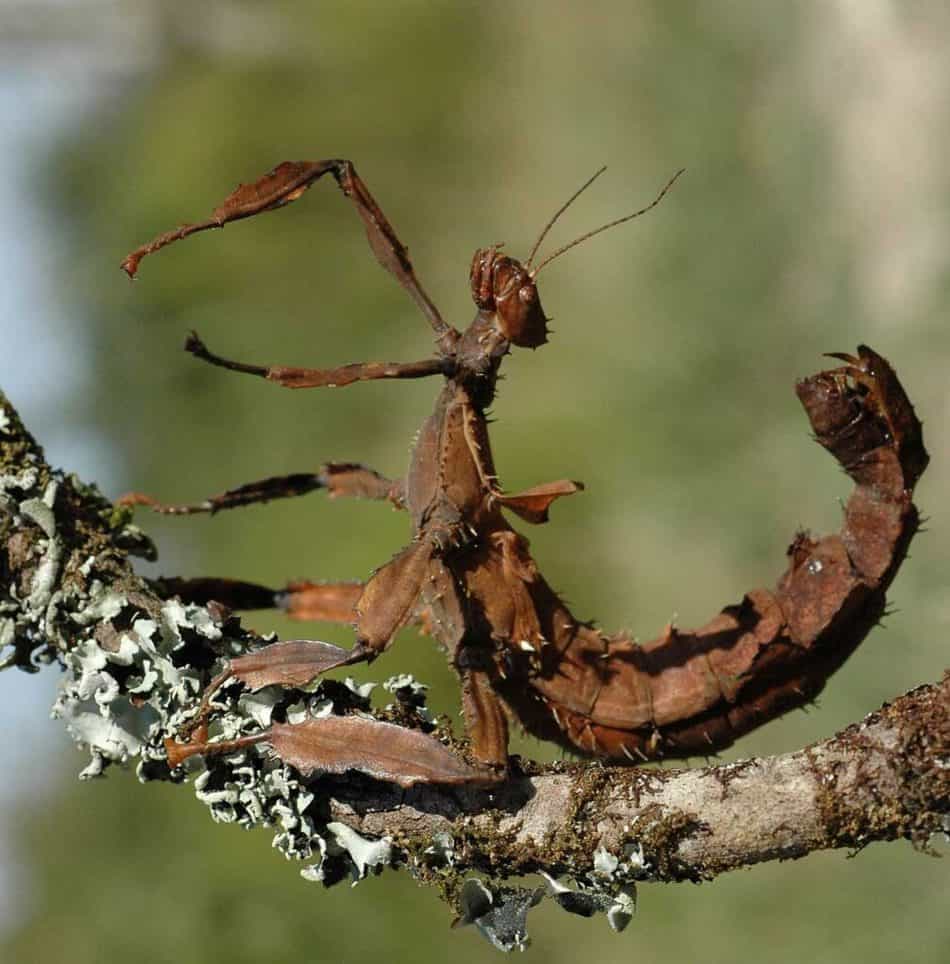
Are There Health Risks If a Stick Insect Bites?
Understanding the potential health risks associated with stick insect bites is crucial, though it’s important to stress that such bites are rare. In the unlikely event that a stick insect does bite, the reaction is typically mild. Most individuals may experience slight discomfort, minor redness, or swelling at the site of the bite. This is a localized response, usually resolving within a few hours to a couple of days without the need for treatment.
Considering Individual Variations
However, it’s worth noting that individual responses can vary. While the majority of people may experience no significant effects from a stick insect bite, there are always outliers. For a small number of individuals, the bite could result in an allergic reaction. Symptoms of an allergic reaction can include increased redness or swelling, itching, or even hives in more severe cases.
Addressing Severe Allergic Reactions
In the rare event of a severe allergic reaction, known as anaphylaxis, symptoms can escalate to include difficulty breathing, rapid pulse, dizziness, or loss of consciousness. It’s critical to seek immediate medical attention if these symptoms occur. However, let’s reiterate that such a severe reaction to a stick insect bite is extraordinarily uncommon.
Overall, the health risks posed by a stick insect bite are minimal. Most instances, if they occur at all, result in minor discomfort that subsides on its own.
Keeping Stick Insects as Pets: Pros and Cons
The unique and intriguing nature of stick insects has made them a popular choice for exotic pet enthusiasts. They captivate with their delicate stick-like appearance, fascinating behaviors, and relatively simple care requirements. Their peaceful, non-aggressive demeanor reduces the chances of bite incidents, making them ideal even for families with younger children. Furthermore, they can provide a wonderful opportunity to learn more about the enthralling world of insects and nature’s strategies for survival, such as camouflage.
Care Requirements for Pet Stick Insects
Care for stick insects involves providing a suitable enclosure with enough vertical space for them to climb and molt. This habitat should replicate their natural environment, including access to fresh, suitable leaves for consumption. Species-specific requirements may also come into play, such as temperature and humidity control, indicating the need for proper research before adopting these creatures.
Potential Challenges with Stick Insects as Pets
However, there are some cons to consider as well. Despite their docility, stick insects are still exotic pets and may have specific care needs not encountered with more common pets. Some species can grow quite large, requiring significant space. Also, while unlikely, there is still a risk of allergic reactions, either from their defensive secretions or, very rarely, from bites. As they are nocturnal, their activity levels during the day may be quite low, which some pet owners may find less engaging.
Considerations Before Adopting Stick Insects
Given these factors, it’s essential to thoroughly consider your ability to meet the needs of stick insects before bringing them into your home. Providing the right environment, diet, and care can ensure a healthy life for these fascinating creatures and a rewarding experience for you. Understanding the commitment and responsibility involved in keeping any pet is crucial, and stick insects are no exception.
Role of Stick Insects in the Ecosystem
Stick insects play an integral role in their native ecosystems. They are primarily herbivores, feeding on a diverse range of foliage, particularly from trees and shrubs. This feeding behavior contributes to the health of plants by pruning their growth and aiding in their propagation.
As stick insects consume plant matter, they break it down into smaller pieces, which eventually become part of the topsoil once excreted. This organic matter enhances soil fertility, which in turn promotes healthy plant growth.
Stick insects are also a part of the diet for many creatures. Birds, reptiles, spiders, and even other insects prey on stick insects. Their abundance provides a reliable food source for these predators, contributing to the overall balance of the food chain. Despite their impressive camouflage abilities, stick insects do occasionally fall victim to keen-eyed predators. This relationship between predator and prey also contributes to the regulation of the stick insect population, maintaining ecological balance.
Another crucial yet often overlooked role of stick insects is their contribution to the scientific community. Their unique physical and behavioral characteristics provide excellent study material for researchers in various fields such as entomology, evolutionary biology, and environmental science. Understanding their behaviors, including their general aversion to biting, contributes to broader scientific knowledge.
Conclusion
In conclusion, while it is theoretically possible for stick insects to bite, it is highly unlikely and certainly not a regular or intentional part of their behavior. Understanding the physiology, feeding habits, and behaviors of these intriguing insects helps answer the question, “Do stick insects bite?” with a qualified “only in rare circumstances, and usually as a result of mishandling.”
Ultimately, these peaceful and fascinating creatures pose minimal risk to humans. They are a testament to nature’s creativity and deserve our respect and care. Coexisting peacefully with stick insects is entirely possible with a little knowledge and a lot of appreciation.
Key Takeaways
- Stick insects are unlikely to bite humans, and biting is not a natural or common defensive behavior.
- Stick insects primarily have a vegetarian diet, with a preference for certain types of plants.
- Stick insects rely heavily on camouflage for protection against predators, but may also use other defensive mechanisms such as playing dead or secreting a foul-smelling substance.
- Stick insects are found across the globe in a wide range of habitats and prefer warmer climates.
- Stick insects as pets require specific care needs and space, but are generally peaceful and non-aggressive.
- Stick insects play an integral role in their native ecosystems by contributing to the health of plants and regulating their population.
- Stick insect bites are typically mild and result in minor discomfort, but severe allergic reactions may occur in rare cases. Seek medical attention if necessary.
- Understanding the physiology, feeding habits, and behaviors of stick insects contributes to broader scientific knowledge and appreciation for nature’s creativity.
FAQs
Q: Do stick insects bite?
A: Stick insects can bite, but it’s extremely rare and usually only happens if they feel threatened or mishandled.
Q: Are stick insect bites harmful?
A: In the rare instance that a stick insect does bite, it is typically not harmful. The bite may cause minor discomfort, but it’s unlikely to cause any significant harm.
Q: Can stick insects bite humans?
A: While stick insects have the physical capacity to bite, they do not typically bite humans. They are gentle creatures and would only bite if they felt severely threatened.
Q: Are there specific species of stick insects that are more likely to bite?
A: No, all species of stick insects are generally peaceful and do not commonly bite.
Q: Do stick insects bite other insects?
A: No, stick insects are herbivores and do not prey on other insects. Their mouthparts are designed for eating plant material, not for biting.
Q: Can stick insects bite through clothing?
A: Given the gentle nature and the structure of their mouthparts, it’s highly unlikely that a stick insect could bite through clothing.
Q: What should I do if a stick insect bites me?
A: If a stick insect does bite, it’s best to gently remove the insect without causing it harm. The bite may cause minor discomfort but should not require any specific treatment.
Q: How can I handle a stick insect safely to avoid bites?
A: Stick insects should be gently picked up and allowed to walk freely on your hand. Avoid squeezing or gripping them tightly, which could cause them to feel threatened.
Q: Are stick insects aggressive?
A: Stick insects are not aggressive creatures. They are typically very calm and prefer to avoid confrontation by camouflaging with their surroundings.
Q: Do stick insects have teeth?
A: Stick insects don’t have teeth in the way that mammals do, but they have mandibles or “jaws” which they use for eating plant matter. These aren’t typically used for biting in defensive situations.
Q: What do stick insects eat if they don’t bite insects or humans?
A: Stick insects are herbivores, meaning their diet is plant-based. They typically feed on leaves from a variety of trees and shrubs.
Q: Do stick insects pose a threat to humans or pets?
A: No, stick insects do not pose a significant threat to humans or pets. They are peaceful creatures and their primary defense is their ability to blend into their environment.
Q: How can I avoid getting bitten by a stick insect?
A: The best way to avoid a bite is to handle the stick insect gently and respectfully. However, the chance of getting bitten is extremely low due to their passive nature.
Q: Are stick insect bites poisonous or venomous?
A: No, stick insects are neither poisonous nor venomous. If they do bite, it may cause slight discomfort but no venom or poison is involved.

